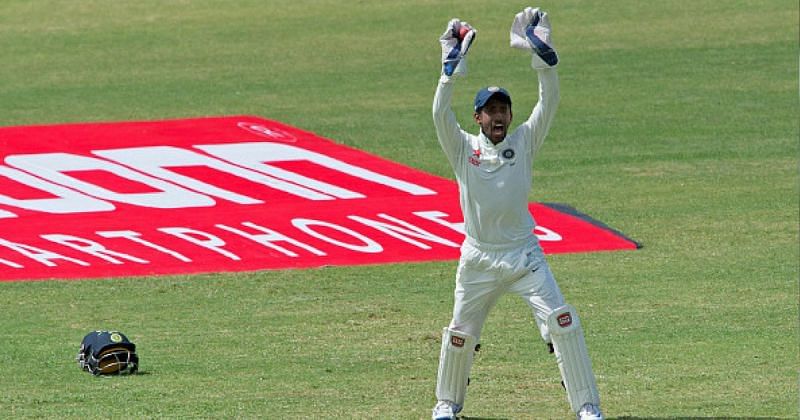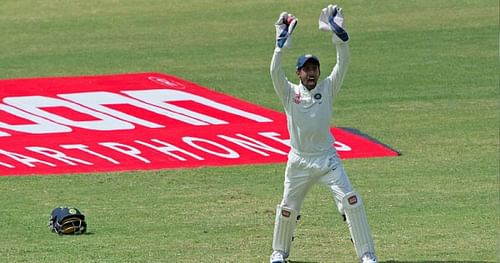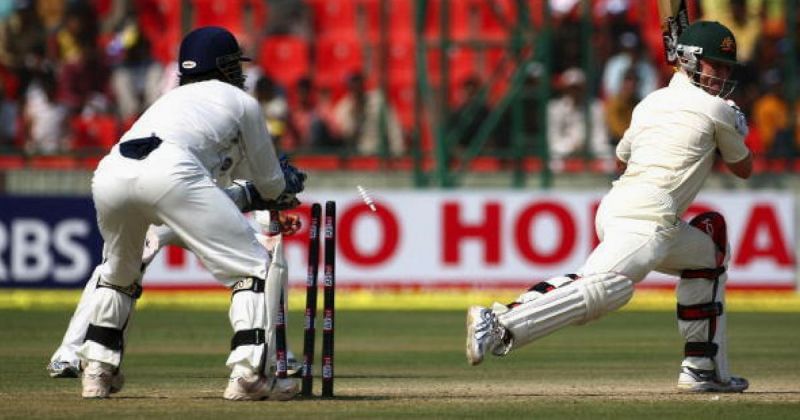
The key elements of wicketkeeping

Wicketkeeping is a specialized job that requires a lot of hard work. Youngsters who want to take up wicketkeeping must be ready to put in the hard yards. As a cricketer who has kept wickets at the international level, the first and foremost thing for me would be the fun, enjoyment, and interest in keeping wickets.
That's because a wicketkeeper does his job for a longer period of time, throughout the innings, whether it is limited-overs cricket or Test matches. Therefore, fitness and concentration are very much required for good wicketkeeping. In terms of fitness, speed, agility, and quick reflexes are the attributes that a good keeper must possess.
Apart from these skills, a wicketkeeper should be a good reader and an observer of the game. He must be in a position to give feedback to the captain and the bowler about the batsman's weakness and the field positions. A wicketkeeper should also be a good batsman, especially in this competitive era of wicketkeeper-batsmen. And yet, after doing all of this, he shouldn't expect appreciation, as the job of a keeper is most often a thankless job.
What are young wicketkeepers taught?
Keeping to spinners is considered the most difficult part of wicketkeeping as the keeper gets very little time to react. Moreover, the leg side becomes a blind spot for the keeper. If a wicketkeeper misses a catch/stumping, coaches usually say that he is getting up from his position before the ball pitches. This is a very crucial aspect of wicketkeeping. But it is also very important to address the root cause of this problem. It could be a lapse in concentration, or a technical reason, such as an imbalance in the stance, footwork, etc. It is very important to maintain a good body balance, which can be achieved by keeping the body weight in the middle part of the feet; neither on the toes nor on the heels.
In the past, wicketkeeping was an aspect generally neglected by the coaches. Wicketkeepers used to collect throws before a match because fielders needed someone to take their throws, and during the match, wicketkeepers stood behind the stumps because bowlers needed someone to keep to their bowling.

Fortunately now, a lot of emphasis is given to coaching a wicketkeeper who is now an integral part of every team. Thanks to the National Cricket Academy and the state associations, that teams are now appointing a special fielding and wicketkeeping coach for the team, whose main focus is to look after the fielders or wicketkeepers. So, just like batting or bowling, pre-match preparation for wicketkeeping is also very important. A young wicketkeeper must go through a lot of match-relevant quality drills.
Toughest bowlers to keep wickets in domestic cricket
Just like batting, in wicketkeeping too, you find some bowlers difficult to keep. For me, the match and pitch conditions played a vital role in keeping to a particular bowler. For example, when the ball keeps low on the third and fourth days of the game, it is difficult to keep to medium pacers because ball doesn’t reach you on the first bounce. It becomes worse when the outfield is not that good and also if the spinners are hitting the rough. Moreover, a batsman's style of play also determines how easy or difficult it is to keep.
When I made my debut for Haryana in 1998-99, Pankaj Thakur and Pradeep Jain were the frontline spinners in the team. I still remember a Ranji Match against Tamil Nadu, who were then led by Robin Singh and had several southpaws in their midst, at the Nehru Stadium, Gurgaon in 2000-01. I found Pankaj Thakur, the right-arm off-spinner, challenging to keep to because he was quick in the air and his balls used to turn square from the rough. I found it difficult to keep wickets for full-pitched balls in the rough outside off stump that also land in the gap between the bat and the pad.
Whenever I played against Karnataka, I always found it difficult to keep when J Arunkumar batted because his backlift blocked my view. So I had to make slight adjustments and position myself further outside the off stump.
Toughest bowlers to keep to in Indian cricket team
It was the 1st Test of India's 2002 tour to England, at Lord's. In England, the ball swings a lot even after crossing the batsman. Hence, it was always challenging to keep to Zaheer Khan in those conditions. Zaheer used to swing the ball both ways, so he was one of the toughest bowlers to keep to.
Anil Kumble posed difficulties not only to the batsman but also to the wicket keepers because of bounce that he extracted. I found him difficult to keep in one of the practice games we played on that tour and that wicket had inconsistent bounce. I collected several balls at shoulder height, and at the same time, a few of them kept low as well. Kumble had that extra pace on his deliveries unlike other spinners. He had also developed a unique style to deliver a googly by gripping the ball with two fingers -- the thumb and the forefinger. I had to be very watchful of that.
Practice routine
I always followed a regimented practice routine. I considered myself as someone who wasn't very talented, and that’s why it was very important for me to practice well. I used to have two sessions of practice a day at the least, if not three, and I made it a point to practice different aspects of fitness, such as strength, speed, endurance, agility, which included sessions of rope-skipping, apart from the regular drills.
I used to play a lot of matches, which really helped improve my match temperament. At times, I played two matches in a day. I was a member of the first batch of the NCA in the year 2000. I learned several advanced training drills during my time there. I used to do a lot catching regularly. For a wicketkeeper, I feel the role of a coach or the person giving the catching practice is equally important. I was fortunate to have Mr. Ramesh Lalit (who is no more), used to hit me hundreds and thousands of challenging catches.
After all, "practice doesn't make you perfect, but a perfect practice makes you perfect."